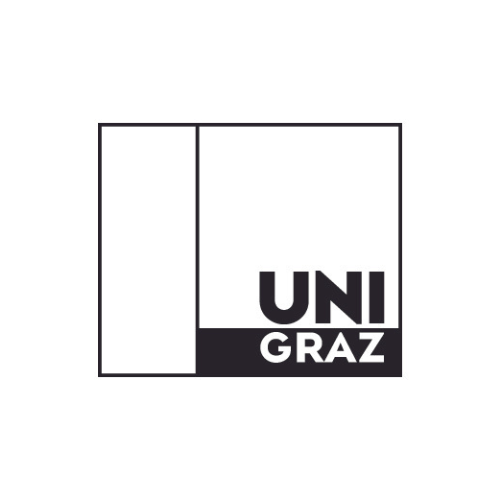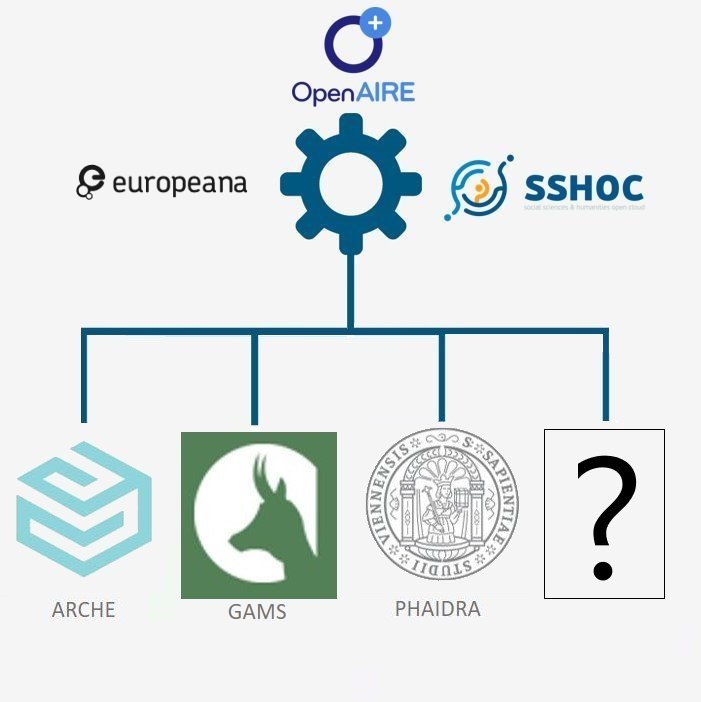- Übersicht
- Beschreibung
- DariahCampus
- Kontakt

Artificial Intelligence Prompt Engineering Text to Text:
Enter the world of text-to-text AI with this resource on prompt engineering. Learn how to craft precise input prompts to guide AI in generating desired text outputs, enhancing applications in chatbots, content creation, and language translation. By mastering various techniques, you’ll improve the efficiency and accuracy of AI interactions, tailoring responses to meet specific needs in humanities research and beyond.
This resource is part of a group of resources on Artificial Intelligence by Emily Genatowski based on the course she developed and taught at The University of Vienna titled Artificial Intelligence and Large Language Models in Humanities Research.
Introduction to Advanced Image Generation Techniques:
Explore advanced AI image generation techniques in this resource, designed to help you work with AI tools efficiently and accurately. Learn how to use methods such as word weighting and narrative elements to bridge the connection between your vision and the AI's output. This guide will equip you with the skills to employ these techniques effectively, blending art, and technology to transform digital image creation.
This resource is part of a group of resources on Artificial Intelligence by Emily Genatowski based on the course she developed and taught at The University of Vienna titled Artificial Intelligence and Large Language Models in Humanities Research.
Artificial Intelligence Prompt Engineering Legal, Societal and Ethical Issues:
This resource introduces the ethical, societal, and legal complexities of Artificial Intelligence, focusing on the challenges posed by its development and implementation. It explores potential risks such as bias, privacy, autonomy, and job displacement, using case studies to highlight real-world issues. The resource aims to equip learners with critical thinking skills to evaluate AI's impact and navigate its ethical and legal implications responsibly.
This resource is part of a group of resources on Artificial Intelligence by Emily Genatowski based on the course she developed and taught at The University of Vienna titled Artificial Intelligence and Large Language Models in Humanities Research.
Applied Artificial Intelligence:
This resource explores the transformative impact of Artificial Intelligence across various sectors, including healthcare, finance, retail, manufacturing, and more. By examining the unique benefits, challenges, and future potential of AI, learners will gain insight into how AI is reshaping traditional practices and envision its role in the future. Upon completion, learners will be equipped to understand the current applications of AI, discuss its limitations, and predict its future uses in multiple fields.
This resource is part of a group of resources on Artificial Intelligence by Emily Genatowski based on the course she developed and taught at The University of Vienna titled Artificial Intelligence and Large Language Models in Humanities Research.
Prosopography: What is a Person?:
In this resource, the key concept is the prosopon, an invaluable tool in historical and literary studies that represents a collected literary depiction of a person. A prosopon includes all forms of information about an individual, gathered from various sources such as texts, records, and artifacts. By studying prosopons, we can piece together comprehensive portraits of individuals from the past, even if these portraits are sometimes fragmented or biased. This approach helps us understand the societal roles, personal relationships, and historical significance of individuals, providing a richer context of the past.
This resource is part of a group of resources on Prosopography written by James Baille and Daniel Knox and assembled onto Dariah Campus by Emily Genatowski based on the course taught at The University of Vienna titled Prosopography and Social Network Analysis.
Prosopography: Identity:
This resource covers the Theory of Identity in Prosopography, focusing on characteristics like roles, titles, ages, ethnicity, sexuality, gender, and religion. It highlights the complexities of these identities, which are fluid, multi-layered, and subject to change over time, emphasizing the need for a nuanced and flexible approach in historical research. The resource aims to equip learners with the ability to critically analyze historical sources and understand the dynamic nature of identity construction and representation.
This resource is part of a group of resources on Prosopography written by James Baille and Daniel Knox and assembled onto Dariah Campus by Emily Genatowski based on the course taught at The University of Vienna titled Prosopography and Social Network Analysis.
Prosopography: Scoping a Database:
This resource discusses the importance of defining the scope of a database project in the humanities and social sciences. It emphasizes the necessity of setting boundaries to ensure the project is manageable, aligns with research questions, and informs other researchers about the database's content. Learners will understand the significance of formal scoping, differentiate between source and model scoping, and learn the essential questions to ask when scoping a database.
This resource is part of a group of resources on Prosopography written by James Baille and Daniel Knox and assembled onto Dariah Campus by Emily Genatowski based on the course taught at The University of Vienna titled Prosopography and Social Network Analysis.
Data and Databases: An Introduction:
Databases are fundamental to modern information management, enabling the structured collection and analysis of data. This course bridges the gap for humanities and social science researchers, providing an overview of technical skills needed to query and create databases while addressing the unique challenges posed by humanities data. Learn to use databases effectively to enhance your research, from project planning and data storage to navigating ethical considerations.
This resource is part of a group of resources on Data and Databases written by James Baille and Daniel Knox and assembled onto Dariah Campus by Emily Genatowski of The University of Vienna.
Databases: Source to Data:
This resource discusses the unique characteristics and challenges of humanities and social scientific data, which differ significantly from scientific data. It highlights issues such as non-experimental nature, source dependency, high complexity, and variability in data quantity and consistency. The guide also covers the importance of understanding data capture processes, metadata, and the implications of how data is classified and structured for database creation in the humanities.
This resource is part of a group of resources on Data and Databases written by James Baille and Daniel Knox and assembled onto Dariah Campus by Emily Genatowski of The University of Vienna.
Entity Relationship Data Model:
In this resource, learners will understand the importance of defining entities—objects with distinct characteristics—within a given field. Learners will explore associations (relationships between entities), attributes (elementary data on entities), identifiers (unique attributes that distinguish entities), and cardinalities (measures of how entities relate to one another). By mastering these concepts, you can effectively model and manage data in various domains.
This resource is part of a group of resources on Data and Databases written by James Baille and Daniel Knox and assembled onto Dariah Campus by Emily Genatowski of The University of Vienna.
Scoping a Database Project:
This resource helps learners understand the importance of scoping prosopography projects, guiding you in forming a scope based on research questions and key factors. By clearly defining the scope, researchers can streamline efforts, focus on relevant data, and produce meaningful results. Learn to set effective boundaries, delineate clear project parameters, and ensure that research is both focused and comprehensive.
This resource is part of a group of resources on Data and Databases written by James Baille and Daniel Knox and assembled onto Dariah Campus by Emily Genatowski of The University of Vienna.
Data Ethics:
This resource discusses the ethical considerations in handling humanities data, focusing on personal data protection, intellectual property rights, and the ethical implications of data categorization and processing. It emphasizes the importance of obtaining consent, ensuring privacy, respecting copyrights, and considering the biases and impacts of data structures and analyses. Learners will understand how to anonymize data, respect copyrights, and apply ethical principles to categorization and data processing, ensuring their research is conducted responsibly and ethically.
This resource is part of a group of resources on Data and Databases written by James Baille and Daniel Knox and assembled onto Dariah Campus by Emily Genatowski of The University of Vienna.
Data Management and Storage:
Proper long-term data storage is crucial for the sustainability and accessibility of research in humanities and social sciences. This course guides you through planning for data re-use, addressing technical and ethical challenges, and ensuring responsible data management. Learn how to structure, store, and document your data effectively to support future research and comply with open access requirements.
This resource is part of a group of resources on Data and Databases written by James Baille and Daniel Knox and assembled onto Dariah Campus by Emily Genatowski of The University of Vienna.
A Basic Introduction to Geographic Information Systems:
Spatial work in Geographic Information Systems (GIS) encompasses two main types: analysis and visualization. Analysis involves computational techniques to process and interpret spatial data, while visualization makes this data comprehensible to people. Most GIS projects blend these aspects to utilize the strengths of both, and this guide aims to make these concepts accessible even to those new to GIS.
This resource is a pathfinder on Geographic Information Systems (GIS) inspired by a collaboration with Liam Downs-Tepper and assembled onto Dariah Campus by Emily Genatowski of The University of Vienna.
















